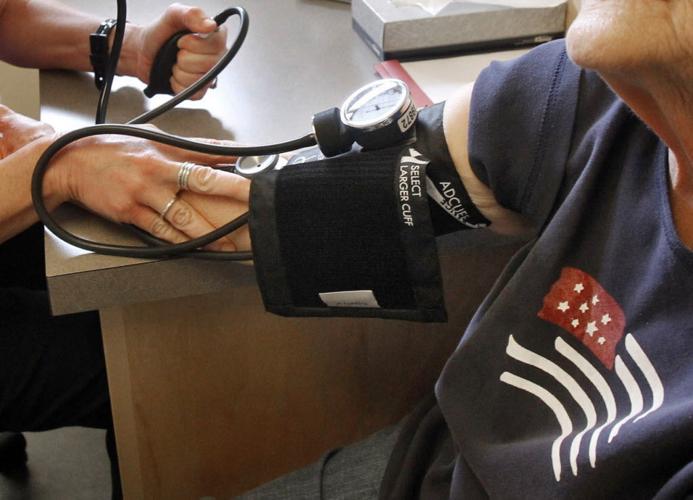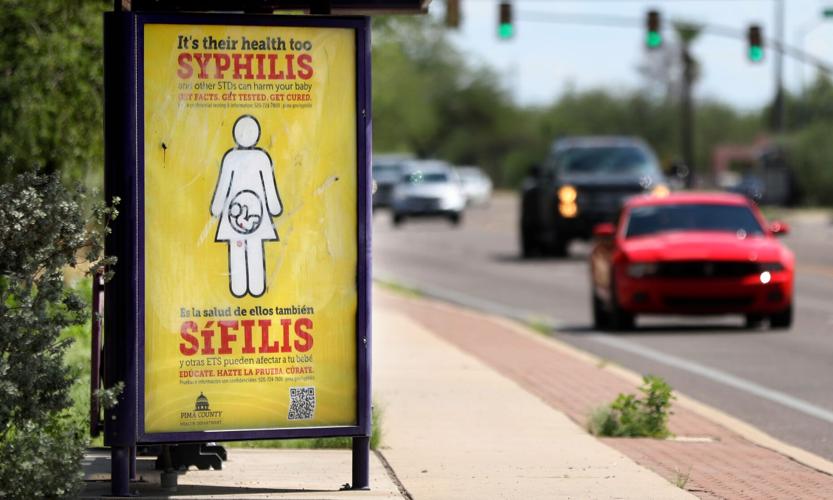Residents of six Arizona counties have better overall health than people living in Pima County, a new study shows.
The County Health Rankings were released Wednesday by the Robert Wood Johnson Foundation and the University of Wisconsin Population Health Institute. They compare Arizona counties to one another as part of a nationwide study.
The rankings looks at more than 90 health-influencing factors, including education, housing, jobs, transportation, access to medical care and more.
Pima County fell from 6th place in 2022, coming in behind Maricopa, Pinal, Santa Cruz, Yuma, Yavapai and Greenlee counties for 2023.
Pima also ranked 7th in health outcomes, which inform how long people live on average within a community, and how much physical and mental health people experience in a community while they are alive.
Drivers for Pima County’s overall ranking include its rates of obesity, smoking and sexually transmitted infections. “Severe housing problems” — including overcrowding, high costs and lack of kitchen or plumbing facilities — also contributed to the score.
In Pima County, other risk factors that drive down residents’ health include:
Eighteen percent of residents are experiencing at least one type of severe housing problem, versus 17% in the state and U.S.
Twenty percent of children live in poverty, compared to 18% in Arizona and 17% in the United States.
On average, per-pupil spending among school districts was $1,712 below the estimated amount needed to support students in achieving average US test scores.
Data shows that Pima County ranked 4th in the state in overall health from 2018 through 2020, then dropped to sixth in 2021.
“There are many factors contributing to the health ranking among Arizona counties, but when you boil them all down, they come down to social connectedness, income inequality, access to quality education and affordable housing: the social determinants of health,” said Will Humble, executive director for the Arizona Public Health Association, in a news release. “Health departments can influence some of those things, but the big policy levers rest with the state legislature and other elected officials and we call on them to use these data to inform their policy decisions.”

This April 3, 2018 file photo shows a closeup of a beam scale in New York.
The report suggests several priorities for Pima County:
Addressing the smoking rate through increased education, cessation and prevention efforts. In 2020, 16% of Pima County adults were cigarette smokers. Arizona’s smoking rate for the same period was 14%.
In Pima County, 29% of adults had a BMI of 30 or greater. While this is below the state and national rate of 32%, experts still considered it concerning, suggesting dozens of health and recreational strategies to address obesity.
Pima County residents are diagnosed with sexually transmitted infections at a rate higher than the national average. In 2020, 504.6 new cases of chlamydia were diagnosed per 100,000 people in Pima County, compared to 481.3 per 100,000 in the United States. The report points to several community and computer-based interventions to address sexual health.
For the first time, this year’s rankings measured civic infrastructure and participation in counties, including access to parks, school funding adequacy, broadband, voter turnout and self-reported census participation.
The final report said that counties with well-sourced civic infrastructure have higher rates of high school completion, higher household incomes, less income inequality and lower rates of children in poverty and uninsured adults. In these communities, people also tend to live longer.
“Our findings reveal that people and places thrive when all residents have the chance to participate in their communities,” said Sheri Johnson, principal investigator of County Health Rankings and Roadmaps and director of the University of Wisconsin Population Health Institute, in a news release.
Dr. Daniel Derksen, associate vice president for health equity and outreach at the University of Arizona, said the Arizona counties that ranked high are the ones he would expect, when factoring in key social determinants that affect health outcomes,
Social determinants of health are conditions in the environments where people are born, live and age that affect a wide range of health, functioning and quality-of-life outcomes and risks.
The CDC has grouped these determinants into five areas: economic stability; education access and quality; health care access and quality; neighborhood and built environment; and social and community context
Very rural areas where the population tends to be older and have more chronic disease and also lower income have some of the biggest challenges to overcome, Derksen said.
“By addressing underlying health determinants, we can improve outcomes and reduce disparities we’ve seen in Arizona,” Derksen said. “But we haven’t made significant progress in some areas.”
Navajo and Apache counties, which are lower income and lack clean water, reliable transportation and ease of access to health services, found themselves at the bottom of the state’s rankings, which Derksen said is no surprise given the conditions.
The CDC has also reported a decrease in life expectancy in some populations, including American Indian and Hispanic populations, which also factors into the county health rankings.
Derksen said the health workforce shortage, while concerning by itself, disproportionately impacts rural and underserved communities, which struggle to recruit and retain healthcare workers.
“The population in Arizona has grown so rapidly across the counties, we have to have the ability to keep up with training enough health professionals and help prepare them to practice in the areas most needed: Rural and underserved communities,” Derksen said. “Pima is more metropolitan around the Tucson area and it also has very rural components to it. There are subdivisions of the county that are rural and tend to have challenges across access to care.”
Derksen said he finds the report valuable in that it provides action items and things counties and governments can do to improve outcomes.
“It’s not just data that shows how bad things are,” he said. “it also has strategies for what communities can do to improve health outcomes. That’s an important public safety message – there are tangible things we can do to improve health outcomes.”
The rankings suggest a variety of ways to build civic health, including investing in libraries, community centers and other public spaces to encourage in-person connections; expanding civic knowledge and skills through youth leadership programs and implementing voter registration and turnout initiatives to expand representation in the democratic process.
The study noted areas of strength in Pima County including its rank as second in the state in terms of health factors — the things people can modify to improve the length and quality of life for residents. Other areas of strength include Pima County’s rank as among the top four counties in the state for clinical care, as well as health behaviors.
Pima County has seen improvement from previous years in many areas, including teen births, high school and college completion, access to primary care and mental health providers, preventable hospital stays and mammography screenings.
Get a roundup of solutions reporting from the Arizona Daily Star at linktr.ee/starsolutions. Video by Caitlin Schmidt / Arizona Daily Star.






